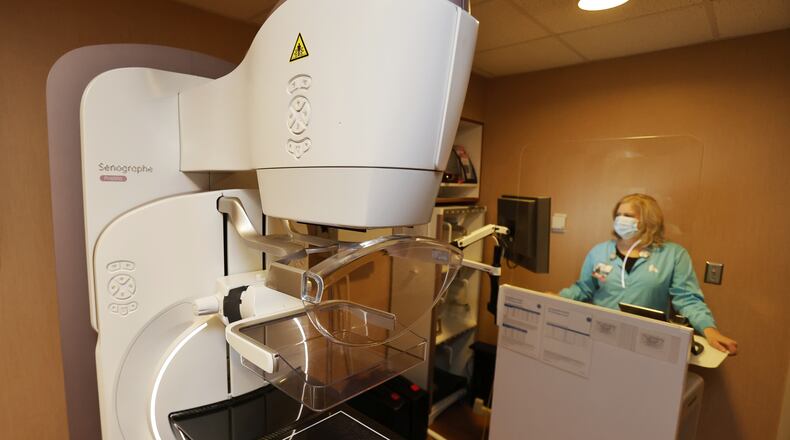When people began going back for physical exams, doctors saw some patients with illnesses that were further along than if they had been caught and addressed earlier. Allen described how some patients, such as checking a patient’s blood sugar through an A1C test for diabetes, faced results that were higher than if they had gone to the doctor sooner.
Other illnesses, such as for cancer screenings, went a little bit longer without that attention, he said.
Sally Grady, director of Kettering Health Breast Centers, said they closed for six weeks in 2020 following lockdown orders. From 2019-2020, screening volumes were down about 3.8%, Grady said, but diagnostic mammograms were up almost 9%.
While regular screenings are for more preventative care, diagnostic screenings are typically where more testing is being done out of a concern for an issue that a radiologist caught on a screening or the patient came in with a concern regarding a lump, discharge, or other issue.
“That led me to believe that women were delaying a bit coming in because our diagnostic rates were up a bit,” Grady said. “We were up 18% for stereotactic biopsies from 2019 to 2020, which again, leads you to believe more women had probably delayed because we were doing more biopsies than we had in a normal year.”
From 2020 to 2021, more patients began coming back and the Kettering Health Breast Centers’ screening rates were up 7.5%.
“A lot of these women are coming back and some of these women may have delayed (screenings),” Grady said. “It’s hard to know what percentage of women might have delayed.”
Grady said volumes started to stabilize in 2022. Their screening rates were still up approximately 5%, but their diagnostic rate was only up 3.5%. Their stereotactic biopsy rate was also down 10%.
“It’s hard to know what percentage of women might have delayed,” Grady said. She said, when they closed early in the pandemic for six weeks, the centers had to call about 2,500 patients to try to reschedule their mammograms. She said about 50% of the patients would go ahead and reschedule, but others said they wanted to wait.
There were also anecdotal stories of patients who said they avoided getting their mammogram because of COVID-19 and then their cancer was discovered later on.
“One patient delayed her mammogram until 2021,” Grady said. “When she came in, she had a much larger cancer than she probably would have had she come (sooner)...She said, ‘You know, I didn’t come back because of COVID. I was a little bit scared about it.’”
Grady said their centers worked to encourage patients to come back early on and continue getting their annual mammograms.
“If you are a woman and you’ve not had your screening mammogram since 2019, and you come in now and have a cancer, it depends on what type of cancer we might find, but if you have an aggressive type, it would be much larger today than it would have been had you come in and we found it in 2019,” Grady said.
About the Author

